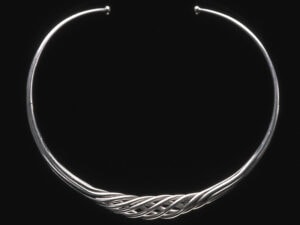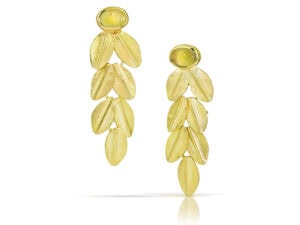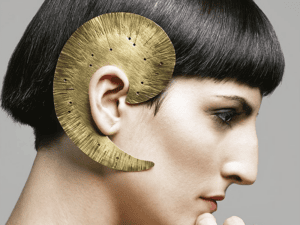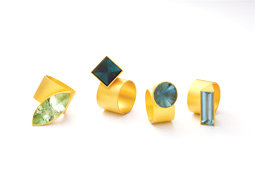
Susan Cummins: Ellen, your gallery is having an exhibition with Ulla and Martin Kaufmann. Can you tell me something about their background? What is their relationship, and how do they work together?
Ellen Maurer-Zilioli: (On Background) There is a background, but it doesn’t seem to be important anymore because their present design has become their hallmark. They come from classical craftsmanship, from a postwar design and tradition in Germany dominated by the “Gute Form,” which means a sort of Bauhaus heritage, reconstructing everyday life aesthetics from the 1950s.
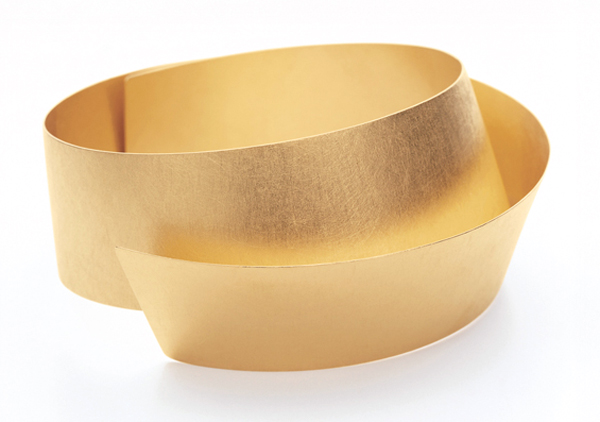
(On Working Together) One hand completes the other. Talking and promoting is more Ulla’s vocation perhaps. Martin seems in the background, but he is an equal part of the creative process. They live a perfect symbiosis, sharing work, life, and dry humor. One can hardly be imagined without the other. Both were born in 1941 in Hildesheim, Germany. They learned their profession between 1958 and 1962 and started to work together in 1970. It does not matter who has the first impulse for a work. They develop it with each other. There is no visual dominance.
What do they say about their work?
Ellen Maurer-Zilioli: As far as I know, there is only one quote from them about their work. “We do that because we have good ideas. It is not primarily for making money, but for the ideas.” (Martin Kaufmann on the phone, 8/12/2012)
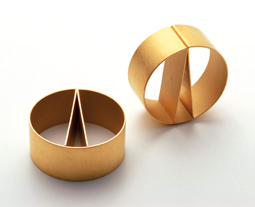
Ellen Maurer-Zilioli: Primarily, that they don’t follow academic scruples, and they keep in touch with different fields, because they are designing kitchen “gadgets,” making silver objects, working sometimes in brass, and creating jewelry. They live at a crossroads and outside of the ivory tower (as said to Reinhold Ludwig, editor of Art Aurea). Their orientation and inspiration is driven by contemporary sculpture and art, namely minimalist and land art.
One necklace has the title Almost Nothing. It seems to be a plan, an attitude, a conviction, and a commitment.
At the center of their work stands the resilient band of gold or silver. In the form of jewelry, the band can be a necklace, a bracelet, or a ring. These are either simple and pure or inflexible with stones or diamonds (usually set asymmetrically, out of center). Sometimes the pieces reflect light in order to “lighten up” the person who is wearing the piece.
The silver vessel takes on the character of bodies or a sculptural construction. A simple silver wall creates a dialogue between inner and outer space. They are embracing the emptiness, defining new rules for silver objects, and following a spiral line. They are finished with silk matte surfaces and a magic effect. There is nearly no ornament left. The form is rigorous, strong, and clean. It has absorbed the experience of modern art and modern times but at the same time tells the whole story of what has been gold and silver craftsmanship in the past.

I understand that your gallery shows a wide variety of art. Does the Kaufmann’s work fit into the overall aesthetics of the gallery? Please explain.
Ellen Maurer-Zilioli: As an art historian, I started with research on avant-garde movements of the twentieth century. That’s why I was automatically open to a wider view on art, including contemporary art jewelry (or whatever you wish to call it), photography, and ceramics. I am not working as a jewelry gallery owner, but I try to deal with jewelry as art without discussing again and again the crucial topic of what is art and what is not, but by putting jewelry alongside other forms of art. We simply postulate about it and go on. Actually, the old, classic galleries from the 1950s and 1960s are my example. I admire them for treating art in a less academic, more open-minded experimental way. A good piece of silver ware is always better than a bad painting, even if it is from a well-known master. Creative quality is all that counts.
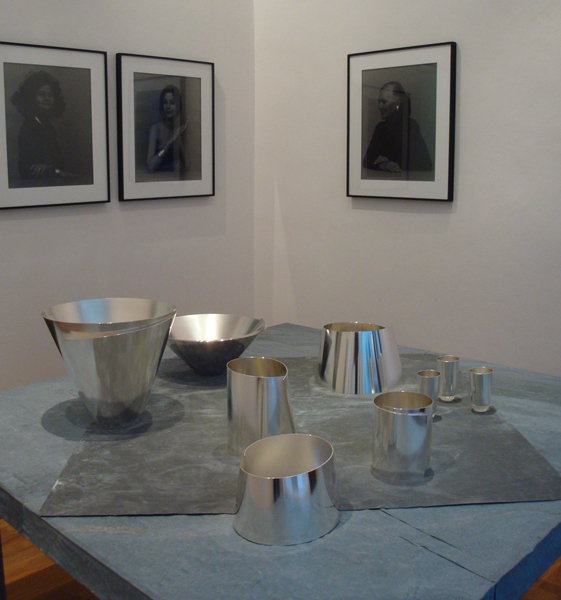
Ellen Maurer-Zilioli: There are common subjects that occupy a new generation between 30 and 40. I know very little about the American situation and can mainly speak about Europe. These are some of the topics of interest: nomadism; internationality; mobility; technology; language (in the sense of collecting, mixing, and combining fragments of the past and present) ; culture, tradition, and contemporary life; politics; private life juxtaposed or in confrontation with public life; and consumption in contrast to necessity. It is a continuous dialogue of outside and inside.
The result is collages and montages of material, content, and messages. In my opinion, the question of the destiny of jewelry or what jewelry will be in the future is not so important. The younger artists are moving more easily between the issues they meet in their life (globalism, multicultural society, and privacy or lack thereof) as well as dealing with complex artistic questions as to composition, color, and construction. It is all subject to their very personal feelings and thoughts.
Can you recommend some recently published books on jewelry that you find particularly good?
Ellen Maurer-Zilioli: The next catalog on Otto Künzli published by Arnoldsche Art Publisher, Stuttgart 2013. It is in conjunction with his solo exhibition at the Die Neue Sammlung–International Design Museum Munich, Pinakothek der Moderne. It opens March 8, 2013. I hope to see you all there!
Thank you.


